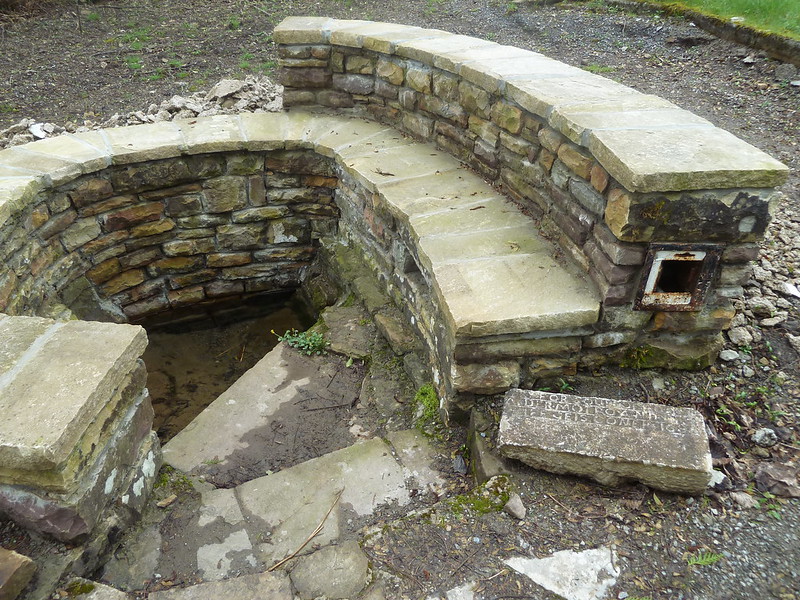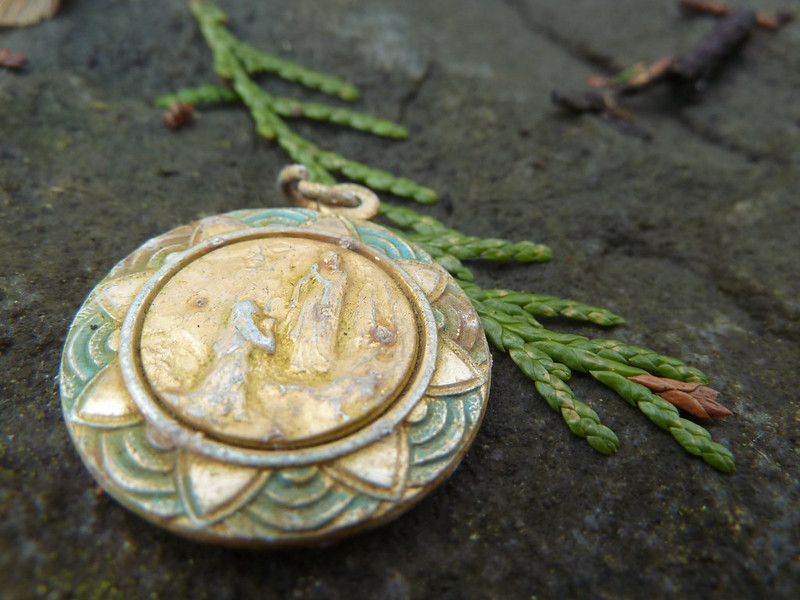Irish Holy Wells, part 1
I have visited six holy wells for novel research over the past couple of weeks. Some were well tended, others neglected and even polluted. Some were enchantingly situated, others less so. But each of them has a long history and tradition behind it, even if they're seldom visited these days. St. Attracta's Well in Clogher, County Sligo. If you follow that link, you'll see just how much further into disrepair this well has fallen since those photographs were taken several years ago. You can still see the bullaun and "serpent's eggs," but the crucifixion carving has been removed (for safekeeping, one hopes!)
St. Attracta's Well in Clogher, County Sligo. If you follow that link, you'll see just how much further into disrepair this well has fallen since those photographs were taken several years ago. You can still see the bullaun and "serpent's eggs," but the crucifixion carving has been removed (for safekeeping, one hopes!)  The next day I stopped by St. Lasair's Well, which is just across the road from Kilronan Abbey in County Roscommon. (Somewhere in the graveyard is the final resting place of Turlough O'Carolan.) Kilronan means "church of Ronan," by the way—Ronan and Lasair are father-and-daughter saints. Her well is in the midst of refurbishment.
The next day I stopped by St. Lasair's Well, which is just across the road from Kilronan Abbey in County Roscommon. (Somewhere in the graveyard is the final resting place of Turlough O'Carolan.) Kilronan means "church of Ronan," by the way—Ronan and Lasair are father-and-daughter saints. Her well is in the midst of refurbishment. 
 Because of the renovations, all the bits and pieces people had left at the well over the years were scattered on the Mass rock a few paces away.
Because of the renovations, all the bits and pieces people had left at the well over the years were scattered on the Mass rock a few paces away. 


 Here I found my first "rag tree": a bush or tree near a holy well where people leave items belonging to a loved one in need of healing. It could be as simple as a scrap of clothing, a bit of yarn, or a set of rosary beads; or you could find children's shoes, stuffed animals...even a pacifier. (Along with this teacup, I found an unopened package of Weetabix. St. Lasair is all set for breakfast whenever she wants it.) I have an even better example of a rag tree to show you in a future post.
Here I found my first "rag tree": a bush or tree near a holy well where people leave items belonging to a loved one in need of healing. It could be as simple as a scrap of clothing, a bit of yarn, or a set of rosary beads; or you could find children's shoes, stuffed animals...even a pacifier. (Along with this teacup, I found an unopened package of Weetabix. St. Lasair is all set for breakfast whenever she wants it.) I have an even better example of a rag tree to show you in a future post.